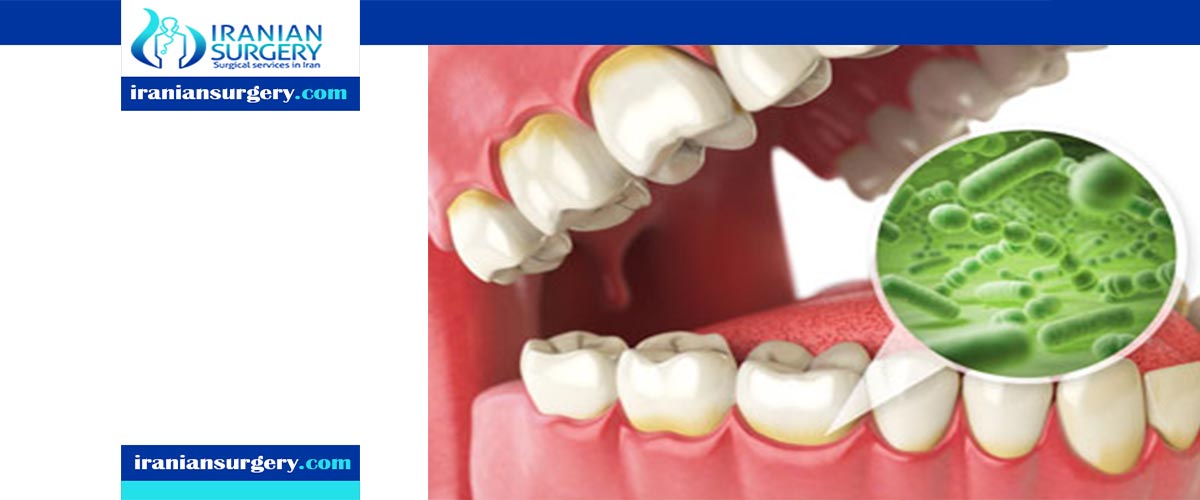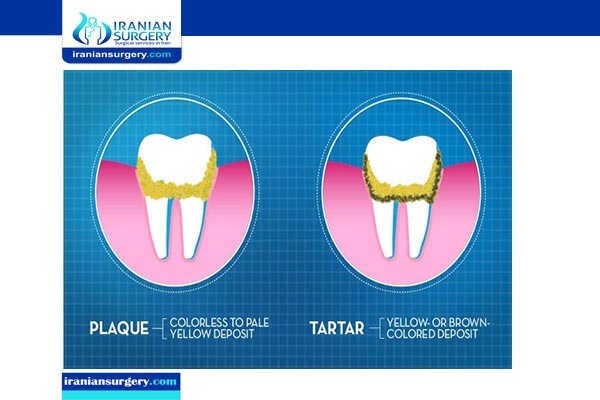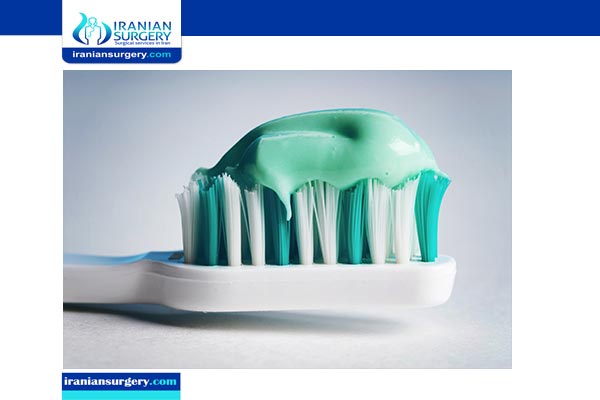Teeth cleaning in iran

Teeth cleaning in Iran
Teeth cleaning in Iran is a part of oral hygiene and involves the removal of dental plaque from teeth with the intention of preventing cavities (dental caries), gingivitis, and periodontal disease. People routinely clean their own teeth by brushing and interdental cleaning, and dental hygienists can remove hardened deposits (tartar) not removed by routine cleaning. Those with dentures and natural teeth may supplement their cleaning with a denture cleaner.
The Dentist’s guide to a basic teeth cleaning
Important points regarding teeth cleaning
Professional teeth cleaning by a certified dental hygienist aims to remove plaque, tarter and stains that have accumulated on the teeth. Even with routine brushing and flossing of your teeth and gums, tarter can develop. The professional cleaning of teeth is a crucial part of good oral hygiene and is needed periodically to maintain the health of your teeth and gums. Most dentists recommend having your teeth professionally cleaned every 6-12 months to reduce the likelihood of periodontal disease progressing. In between routine cleanings, good oral hygiene at home is vital to prevent tarter build-up and gum disease.
Dental cleanings are designed to remove plaque and tarter deposits that have built up on teeth over time. Plaque is the sticky, soft film that contains millions of bacteria. This bacteria found in plaque is what causes gum disease and tooth decay if not removed by daily brushing and flossing, as well as routine trips to the dentist. Tarter, or dental calculus, is a hard calcified deposit that forms on the teeth and can contribute to their decay.
Dentists use specialized instruments to gently remove these deposits without causing harm to the teeth. All dental instruments are put through a stringent cleaning, disinfecting, and sterilizing procedure to ensure safety and quality control. A dental mirror will also be used to help the dentist inspect hard-to-see areas in the mouth.
Dental mirrors feature elongated handles generally connected to round mirrors. A dental mirror can help the dentist observe the teeth and gums for signs of irritation, swelling, decay, tarter, or bleeding. The first tool that is generally used to clean teeth is an ultrasonic instrument. This device uses mild vibrations to loosen larger pieces of tarter. It also sprays subsequent mists of cool water to wash away loose debris. The tips of the ultrasonic instrument are rounded and curved, and kept in constant motion. The settings on the device can be adjusted for the patient’s comfort.
Once larger pieces of tarter are dislodged, the dentist will make the switch to finer hand-held instruments. Often referred to as curettes or scalers, these tools are designed to eliminate smaller deposits on the teeth and smooth the tooth surfaces. Each tooth must be scaled individually to ensure that all tarter is removed. Once the surfaces of the teeth are smooth, the dentist will polish the teeth. Using a slow-speed hand piece containing a soft rubber cup, the polishing device spins at the tip to smooth teeth. Prophylaxis paste, a gritty toothpaste-like solution, is put into the rubber cup. The cup containing the solution spins on the teeth to create a shiny, smooth surface.
In some instances, your dentist may also apply fluoride as the final step in cleaning. Available in a variety of flavors, such as strawberry, chocolate, mint, and cherry, fluoride is placed in flexible foam trays and placed over the teeth. After 30 seconds of the fluoride treatment, the patient is asked to spit the remaining solution into a saliva ejector. Fluoride is used to strengthen teeth and protect them against dental plaque and tarter.
The majority of dental patients find routine teeth cleaning to be painless. The cooling mist of water, mild vibrations, and the pressure felt during “scraping” does not generally caused discomfort. It’s important to let your dentist know if the cleaning is beginning to cause pain, so that they can recommend alterative options to make your teeth cleaning more enjoyable. Most dental cleanings last between 30 minutes to an hour on average, and are performed in a lying position in a comfortable dental chair. After a professional teeth cleaning, you may notice that your teeth feel fresher and look brighter. Teeth cleaning procedures are designed for more than just appearances. Professional teeth cleaning treatments are the primary means of preventing and treating periodontal disease and maintaining tooth health.
Different stages involved in teeth cleaning process
What are different stages of teeth cleaning?
- A physical exam
Most teeth cleanings are performed by a dental hygienist. Before the actual cleaning process begins, they start with a physical exam of your entire mouth.
The dental hygienist uses a small mirror to check around your teeth and gums for any signs of gingivitis (inflamed gums) or other potential concerns.
If they detect major problems, the dental hygienist might call the dentist to make sure it’s fine to proceed.

- Removing plaque and tartar
With the small mirror to guide them, the dental hygienist uses a scaler to get rid of plaque and tartar around your gum line, as well as in between your teeth. You’ll hear scraping, but this is normal. The more tartar there is in your mouth, the more time they’ll need to scrape a particular spot.
Brushing and flossing stops plaque from building up and hardening into tartar. Once you have tartar, you can only have it removed at your dentist’s office. So if this is your least favorite part of the teeth cleaning process, the lesson is to brush and floss more often.
 3.Gritty toothpaste cleaning
3.Gritty toothpaste cleaning
After your teeth are completely tartar-free, the hygienist brushes them with a high-powered electric brush which makes a grinding noise. While it sounds scary, it’s a great way to get a deep clean and remove any tartar left behind from the scaler.
Professional cleanings use toothpaste that smells and tastes like regular toothpaste, though you can often choose between flavors. However, it has a gritty consistency that gently scrubs your teeth. If done by a professional, this polishing of the teeth is deemed safe to do twice a year. But don’t be as harsh with your teeth at home, because you’ll wear down the enamel.
 4.Expert flossing
4.Expert flossing
Whether you floss regularly at home or not, nothing beats an expert flossing session. Your dental hygienist can get deep between your teeth and locate any potential trouble spots where you might bleed at the gums.
This might seem pointless if you floss at home, but having a professional floss your teeth also removes any leftover plaque or toothpaste from earlier in the cleaning process.

- Rinsing
Next, you rinse out your mouth to get rid of any debris. Your dental hygienist will usually give you a rinse that contains liquid fluoride.
 6.Applying fluoride treatment
6.Applying fluoride treatment
The last step of the cleaning process is a fluoride treatment. This treatment is used as a protectant for your teeth to help fight against cavities for several months.
Your dental hygienist may ask you what flavor you like best. They’ll then place the foamy gel (or sometimes a sticky paste) into a mouthpiece that fits over your teeth. It’s usually left on your teeth for one minute. Besides the foamy gel, fluoride varnish is also painted onto the teeth with a small brush. Fluoride varnish will harden when in contact with saliva, so you can eat and drink immediately after.
Other potential steps
Professional teeth cleanings are scheduled twice a year, while X-rays are normally done once a year. Still, depending on what your dentist or dental hygienist observes in your mouth, they might do other exams during your visit. For children, a dentist may recommend molar sealants to help prevent cavities in hard-to-brush areas.
Whether you need any additional steps or not, the key is to keep going back to the dentist for regular teeth cleanings to prevent problems altogether. By understanding what’s going on in advance, you’ll feel more at ease — and maybe even look forward to these appointments.
Why are my tooth so important?
Your teeth vary in shape and size depending on where they are in your mouth. These differences allow the teeth to do many different jobs. Teeth help us to chew and digest food. They help us to talk, and to pronounce different sounds clearly. Finally, teeth help to give our face its shape. A healthy smile can be a great asset; and because this is so important, it makes sense to give your teeth the best care possible.
How do I keep my tooth and gums healthy?
It is easy to get your mouth clean and healthy, and keep it that way. A simple routine can help prevent most dental problems:
. Brushing your teeth last thing at night and at least one other time during the day, with a fluoride toothpaste.
. Spit out after brushing and do not rinse, so that the fluoride stays on your teeth longer.
. Cleaning between the teeth with ‘interdental' brushes or floss at least once a day.
. Good eating habits - having sugary foods and drinks less often.
. Regular dental check-ups.
Although most people brush regularly, many don't clean between their teeth and some people don't have regular dental check-ups. A few small changes in your daily routine can make a big difference in the long term. Your dental team can remove any build-up on your teeth and treat any gum disease that has already appeared. But daily dental care is up to you, and the main weapons are the toothbrush, toothpaste and interdental cleaning (cleaning between your teeth).
I have decided to do Teeth cleaning in Iran. What should I do?
You do not need to worry about dental restoration until you pay more attention to all these issues before proceeding. The important thing is to find a dental clinic and dentist. If you are looking for Teeth cleaning in Iran, you can contact us and get consultation from Iranian surgery.
10 common question about tooth cleaning
[kkstarratings]

